By Bob Difley
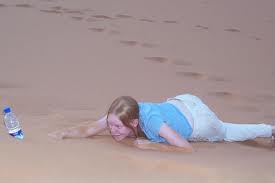 We finished with electricity in last week’s blog and now move on to potable (drinking) water, a natural resource that will limit your consecutive boondocking days unless you are Moses and can strike a stone with a rod and water gushes forth.
We finished with electricity in last week’s blog and now move on to potable (drinking) water, a natural resource that will limit your consecutive boondocking days unless you are Moses and can strike a stone with a rod and water gushes forth.
If you run out of water you can’t make coffee, spaghetti, or jello, brush your teeth, flush your toilet, wash and rinse dishes, shower, or have a nice cold glass of it. In fact, you are probably so used to just turning the spigot that until nothing but a drop or two dribbles out do you realize how thirsty you are.
That’s why boondockers have to plan, curbing the natural instinct (and wasteful habit) of unconsciously turning on the spigot without thought. It’s the same as flicking on the light switch and not considering the amps fleeing your batteries. You don’t have to be paranoid about it, but if you adopt the habit of thinking about the consequences of your actions, it becomes much easier–almost second nature–to mentally monitor your resources. And, of course, there’s your water level gauge for you techies.
There are basically two rules for managing your drinking water: carry more, use less. Carrying more is the easy part. There are a variety of ways to carry additional water and can be loaded into your tow or toad for a water run without having to move your rig:
- One gallon plastic jugs – cheap, disposable or refillable, stow several in nooks and crannies
- 2 1/2 gallon containers with a spigot – found in supermarkets, handy on a counter or picnic table for drinking
- reusable five-gallon collapsible containers – fold flat and stow easily when empty and can be used with the spigot or poured into the water tank
- five-gallon sun showers – fill with water from any source and shower au naturale by hanging from a tree
- six-gallon Jerry jugs – pour spout helps pour into water tank. Also strong arms.
- 45-gallon water bladders from Camping World – lots of extra water. Use with small 12-volt water pump to pump into water tank.
Use less. This is the harder part–breaking or adjusting old wasteful habits and adopting new conservative ones. But you can do it, and they will become second nature before you finish grousing about them. So . . . here are several ways to cut down on your water habit and extend your boondocking time:
- Take Navy showers – Turn water on, wet down–only enough to get wet, turn water off, soap up, turn water on, rinse–only enough to wash soap off, turn water off.
- Save warmming-up water – Collect in plastic bucket or dishpan while shower warms up. Use to flush toilet, wash dishes.
- Use a half glass of water when brushing teeth, not continuous flow.
- Use dishwashing rinse water to flush toilet.
- Wipe the food off your dirty dishes and from pots and pans with paper towels. It will take less water to wash and rinse them, and food bits will not end up in your gray water tank creating unpleasant odors.
- Wash dishes with just a small bowl of soapy water and a sponge or rag, then rinse them all at once in a plastic tub. Running water is a no-no.
There are more ways to conserve water usage, be creative and inventive, but the most useful tip is to be conscious of your water usage. Awareness = efficiency.
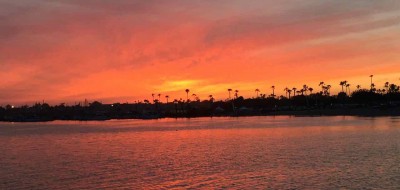

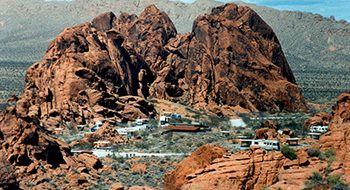
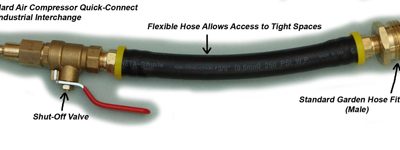
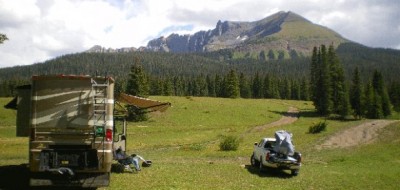
Aileen
Ppl like you get all the barnis. I just get to say thanks for he answer.
Greg
Bob, As you wrote about last fall other options are available to conserve water usage through integrated water conservation solutions. Plumbing in a relay, valve, and tubing from your shower hot water line back to your fresh water system creates a closed loop hot water circulator. No loss of fresh water while your waiting for the shower lines to warm up. To make it easy, my company sells the IHC (Insta-Hot Circulator kit) at usirv dot com. An additional, little more complex, solution is grey water recycling. Using your grey water tank to flush your toilet through filters and a pump will conserve fresh water and reduce the water level in your grey tank. It really solves two problems. We sell a kit for that as well called the TSK (Extend Your Stay Tank Saver kit). Hope this helps some of your readers.
Thomas Becher
And after running out of water because of faith in our guages, I found there to be over 5 gals left in the tank that the pump can’t pick up. Need water go to the tank drain and get some.
William Fincher
Good words of wisdom.As one of your responders stated, water consevation should be a life style in all our homes r.v. s and at home and places we visit, roll on.
Gary
Great stuff, but don’t forget to tell people that the same (almost) applies to home use too. People tell me that they don’t waste water, yet it runs all the time for brushing teeth and washing dishes. This boondocking practice will help eneryone if used at home too.
Vicki
Just wondering if you would write an article on why you full time in a travel versus a motorhome or fifth wheel
butterbean carpenter
Howdy Bob,
Thanx, for good info… Who is crawling in the dunes??
Smooth roads & balmy breezes!!!!
Allison H
Bob, wash & rinse your dishes the way my grandmother did (and I do today).
First, wipe carefully, as you mentioned (Grandma did it with a piece of bread, later given to the chickens).
Use a wet, soapy sponge to wash,( no washwater)
Boil some water in your tea kettle; carefully hold your first dish over your dishpan (tongs are good), rinse carefully with a small amount of the boiling water; catch water in dishpan. Dip second dish in dishpan, then rinse with fresh boiling water, repeat for the rest of your dishes.
Your dishes will be well sanitized and dry almost instantly. Only takes a few cups of water to wash the dishes, and the grey tank doesn’t get nearly as stanky!